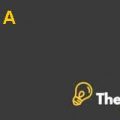
1 Comparison of Ratios with Respect to their industry
The company has presented different industry in the case with their thirteen different company's balance sheet. In the analysis the companies have been assumed to their respective fields. The nature of the industries is mentioned in the Exhibits 2 which relates to the case materials and their suggested market norms. In this case there are many financial ratios extracted which are commonly used in the companies. Their analysis are done by comparing their ratios with respect to the respective industry and are mentioned in the excel sheet which named as industry comparison and depicted in the exhibits 1. The details of the each ratios are given below within the sub-heading of this heading.
1.1 Return on Sales “ROS”
This ratio is calculated on the bases of revenues with net income. It indicates that how effective the returns are to the sales of the company. It shows the effect of the sales for each and every dollar with its profit margin within that period. These are common ratios among the companies to evaluate the percentage of their profit margin over the cost of goods sold. Some of the companies operating in service industries have a higher profit margin because of the zero cost of goods, they do have cost of services which are lower than the cost of goods. Hence, analyzing the ratios of thirteen enterprises by identifying their margins over the cost of goods and sold/cost of services, shows which industry has higher margin and which industry have lower margins.
Moreover, the point that an organization has zero inventories is ensuring that this company is in the field of service industry. At this point, it shows that the company does not have the cost of goods sold, but they have the cost of service which is lower with respect to inventories. Therefore, the company is having higher returns as compared to the manufacturing industry. In the balance sheet it has been confirmed that the software industry is a service industry by analyzing their higher margins with having zero inventory level. Software companies usually do not incur as high expenses as to generate high revenues. The reason is simple, that is, software that is developed at an initial stage worths nothing until it is completed with a copy of developed program to the companies. So therefore it does require the additional cost for their goods.
1.2 Asset turnover “AT”
The asset turnover ratio is calculated on the basis of the sales by showing asset utilization over the sales with respect to their efficiency. The asset turnover covers two variables which is sales and assets of the company and established higher sales revenue and higher will be asset turnover and vice versa with respect to the asset comply ratios. Hence, the matter is that the staffing service industry does not in take fixed asset because they employed the human assets which can never be capitalized. Therefore, the enterprise at number four belongs the higher turnover which is 3.2times which relates to the Staffing industry. One more company which has lower asset turnover, which is at number five. This industry deals with automobile and it have the impact of lower asset turnover because of the heavy investment in the property, plant and equipment. Therefore, it has a low turnover of the assets.
Furthermore, the company at number thirteen is also classified with electric utility industry and having lowest asset turnover and reason are same that is the heavy investment in the non-current assets.
1.3 Return on Assets “ROA”
In this return on asset, the formula is based on the total assets with respect to the net income which is the numerator of the calculation. In this ratio with industry comparison that relates with the staffing service and software because it have the highest level of fixed asset and having the highest return on assets. The reason is simple they have more noncurrent assets as compare to the other companies.
1.4 Financial Leverage “FL”
The financial leverage ratio is analyzed through investing in the assets from the debt source of finance. On the basis of the analysis, amongst the thirteen companies the commercial banking relies on debt financing in the comparison to the equity financing. It has more financial leverage with comparison to other companies. The reason is just because they belong to the industry every taking the deposits from the customers and utilizing them in creating such assets which would benefit for them. While, on the other hand, they provide loans to such companies with respect to their deposits. The commercial banking having 12.11 times more financial leverage.....................
This is just a sample partial case solution. Please place the order on the website to order your own originally done case solution.













